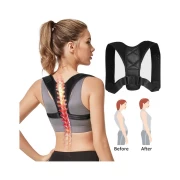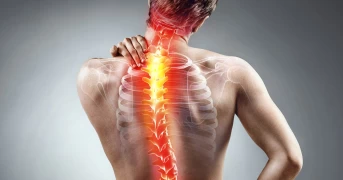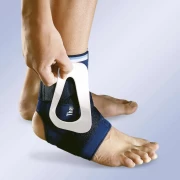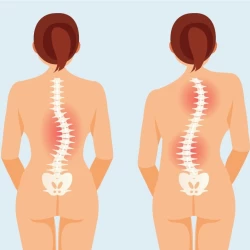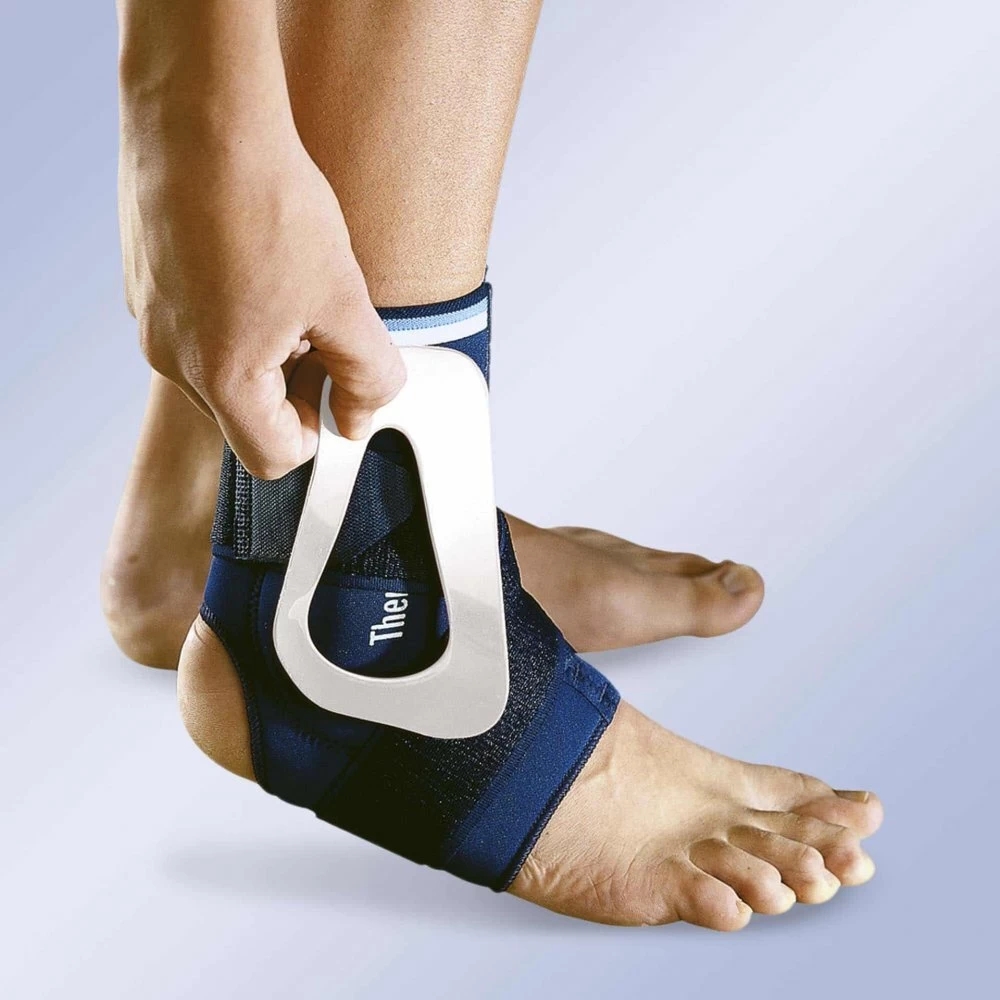
What is Orthotics? What are the types?
- What is Orthotics? What are the types?
- ORTHESIS TYPES
- What is Orthotics?
- Types of Orthoses
- Ankle Orthosis (AFO)
ORTHESIS TYPES
What is Orthotics?
Orthosis is the name given to special devices that keep the joints stable or move properly, play an important role in the treatment of some diseases and problems and in the healing process. Orthoses are medical devices that prevent deformities, restrict or control the movements of the joints, and ensure that the muscles and tissues function properly. Orthoses, which are frequently used in the field of orthopedics, have supportive, preventive and protective properties. Orthoses should be determined and used individually according to the condition of the disease or problem.
Types of Orthoses
Orthosis types are divided into two as static orthoses and dynamic orthoses. While static orthoses are orthoses that keep the joints stable or restrict joint movements, dynamic orthoses are orthoses that allow the joints to move and perform their functions. Orthoses are classified as lower extremity orthoses, upper extremity orthoses and trunk orthoses according to the place they are used in the body.
Leg and foot orthoses are used to support the loss of strength in the legs, to provide healing in fractures and soft tissue strains of the leg region, to assist walking, to support the joints in diseases in the joints and to maintain post-operative recovery.
Depending on the patient's condition, the physician decides in which region an orthosis is needed.
Orthoses can be found as ready-made products, and in some cases, they have to be specially designed. Sometimes it is used only to reduce pain and movement of the joint.
Ankle Orthosis (AFO)
Loss of movement in the foot and ankle, drop foot problem due to nerve damage causes loss of ankle control and walking problems due to neurological reasons. In this case, orthoses extending up to the knee supporting the ankle and leg are used to support ankle movements, prevent deterioration in walking and relieve the person's functional life.
In addition, such orthoses are used in cases such as traumas, ligament injuries or fractures in the foot and ankle region, or in joint problems caused by diabetes and rheumatic diseases in the foot region. The physician should decide which orthosis to use.
In addition, in the foot movement problems caused by cerebral palsy or stroke-induced excessive spasticity in the ankle, custom foot orthoses are produced by the orthotic technicians in the workshop and applied to the patients.
You can reach all of these at www.doktoruzman.com.
1) Personalized Jointless Static AFO
In addition to the loss of strength in the muscles controlling the ankle joint, the lack of movement in the ankle joints or the foot rotates too much during walking, the foot needs to be better stabilized. For this, orthoses that will control the movements of the foot in all three planes, known as jointless AFO, are recommended. The orthosis that is suitable for the patient is determined as a result of the examination and is produced in our AFO workshop, which is approved by the physician.
If the patients using these orthoses use the appropriate orthopedic orthotic shoes, walking will be more controlled.
Conditions of Use;
- Foot drop due to stroke
- Walking problem after head trauma
- Drop foot with spasticity
- Children with Cerebral Palsy who have walking problems
- Drop foot patients due to overweight neuropathy
- Ankle deformity
- Charcot foot
2) AFO with custom articulation
These types of orthoses are used to support the movement and to make the foot more free in walking when there is a loss of strength that will cause foot drop without limitation of ankle movements or excessive spasticity. After evaluating the patient's walking, the physician and technician decide which joint to use and how much movement will be allowed in which directions in the joint. In addition, the orthosis can be made by hardening with carbon in addition to the plastozote material.
Conditions of Use;
- Supporting walking in children with Cerebral Palsy
- Drop foot due to neuropathy
- Drop foot due to lower motor neuron damage
- Charcot Marie Tooth patients
3) Leaf Spring AFO
Although this orthosis is a lightweight product made of polypropylene material, it cannot provide adequate support for people with severe foot drop and overweight. It is readily available for different foot lengths. It is used to control the foot in case of mild drop foot problem due to its very thin structure that allows movement in the ankle. The foot is prone to plantar flexion and provides passive grip.
Conditions of Use;
- Foot control in the early post-stroke period
- Stroke patients with mild drop foot problem
- Control of loss of strength in the ankle due to diseases such as multiple sclerosis
4) Carbon Front supported AFO (Carbon GRAFO)
For ankle orthoses, the support of the orthosis can be planned in front rather than in the back. The reason for this is to support the weak knee muscle during walking and prevent bending in the knee. The front support of the orthosis in walking, which is called the bent-knee gait seen in children with Cerebral Plasy, makes walking better by supporting the quadriceps muscle during walking. These orthoses made of carbon material are both lighter and more durable. It provides more stability and balance, especially in bilateral involvement. Carbon can be made thicker and more rigid and more controlled. It is available in different sizes according to the right or left shoe size. However, according to the patient, it will be necessary to make adjustments in the heel and bands.
Conditions of Use;
- Children with Cerebral Palsy doing bent-knee gait
- Polio and postpolio patients to support weak quadriceps muscle
- Incomplete paraplegic patients
- Charcot Marie Tooth patients
5) Carbon Easy Walk AFO
Easy Walk, a carbon-ready ankle orthosis, is much more comfortable and convenient than similar products on the market with its structure that grips the leg from behind. Trying on this orthosis on the patient and making a slight heel raise to the heel when necessary makes walking better and more comfortable. You can get more information from our technician by calling our company for this product, which is sold in different 3-4 sizes, right and left ready according to the foot number of the patient.
Conditions of Use;
- Drop foot due to stroke and multiple sclerosis
- Gunshot injury, injection-induced herniated disc, or operation-induced peroneal nerve injury
- Charcot joint
- Providing walking with prosthesis with anterior filling in partial foot amputations
6) Silicone Ankle Orthosis (SAFO)
A very comfortable, balanced gait is provided for the patient with this type of silicone orthoses, which is the lightest in ankle orthoses and provides the most support for the foot and leg. Especially in case of bilateral drop foot or bilateral ankle problem, the person's posture changes with sensory inputs known as proprioception from the ground. These orthoses are very effective for increasing balance by taking This orthosis, which is produced in England by Dorset Orthopedics, is imported by our company. It can be prepared for different foot sizes, right or left, or it can be specially produced according to the foot size and skin color of the person when requested.
SAFO is also available for children in different colors and sizes.
Conditions of Use;
- Charcot Marie Tooth patients
- Foot drop due to stroke, brain trauma
- Ankle control in children with Cerebral Palsy
- Drop foot in neuropathy and polyneuropathy patients
7) Dyankle Ankle Orthosis
In this orthosis, ankle plantar flexion is controlled while also supporting the outward rotation control of the ankle known as eversion of the foot with ankle bands, making the foot more stable and keeping the foot in a neutral position during the swing phase of walking and making the foot stable and controlled before landing on the ground. is brought into supination.
This orthosis, which is made of ready-made and plastic material, is also used in the treatment of ankle ligament injuries. It is produced in different sizes and ready for right and left.
Conditions of Use;
- Anterior ligament rupture
- After postoperative ligament repair
- Low foot
8) Foot Up
It is used to prevent the foot from falling by connecting to the foot or shoe with a simple ankle band. This orthosis can be used for very mild ankle control loss. However, sometimes patients can use this orthosis for a short time when they do not want to wear orthoses or orthopedic shoes while participating in social life. In overweight people, severe low foot or bilateral low foot is inadequate and knee, hip and low back problems may develop if this orthosis is continued to be used.
Conditions of Use;
- Diseases that cause mild foot drop
9) ROM Walker
It is aimed to prevent the movements of the foot and ankle with this walking boot, which is produced in short and long models that surround the entire foot and ankle. It provides stabilization both after trauma and after the operation and also allows walking with a comfortable and comfortable support. Additional elevations to the heel area of the foot provide the opportunity to adjust the pressure and angle to be given to the heel with wedges. It is produced ready-made in right and left and different shoe sizes.
Some models have ankle joint and the plantar flexion angle can be adjusted.
The physician decides on the appropriate walking boot.
Conditions of Use;
- Ankle tendon and ligament injuries, sprain
- Forefoot and metatarsal injuries and fractures
- Conservative and post-surgical treatment of Achilles tendon injury
- Stable fractures
- Treatment of pressure sores and ulcers such as diabetes in the foot
10) Aircast Air Stirrup Ankle Orthosis
The ankle is often subject to sprains and ligament injuries. Sometimes, ankle injuries become chronic and are prone to sustained sprains and trauma, called instability. In this product, soft pads are used as edema control by cooling when desired, and the ankle is stabilized with adjustable velcros on the foot, but the movement of the foot is preserved at certain angles.
Conditions of Use;
- Ankle distortions,sprain
- Lateral ligament injuries
- Chronic ankle instability
11) Elastic Ankle Support
After injury, edema develops in the tissues around the ankle and compression is appropriate. Textile product with antibacterial compression effect is produced in different sizes and dimensions. In accordance with the anatomical structure, sometimes a pad can be placed around the wrist.
Conditions of Use;
- Support after trauma or surgery
- Edema of joint origin in osteoarthritis, arthritis
- Tendinitis
- Ankle strain and sprain
- Pain in ankle
12) Model with Ankle Knitting Material
The wristband, which is made of knitted breathable textile material, is used to support muscle strength and reduce pain, as well as stabilization and functional recovery.
Conditions of Use;
- Ankle instability
- Ankle edema
- Arthritis
- Post-traumatic protection
13) Soft Wrist Strap
This bracelet, which is intended to prevent foot sprains, stabilize the ankle, and reduce pain, is tightly contacted with the laces. It also allows you to do sports activities. It is an advantage to provide comfort as well as support.
Conditions of Use;
- Foot sprains
- Inadequate ankle control
- Sprain
- For sports protection
14) Adjustable Ankle support
With cross tension scarves, the ankle is controlled and the person's ankle circumference is supported. The heel is exposed, lightweight and suitable for use with most shoes. The straps are crossed at the ankle and the wristband does not slip. It is possible to use it by injury during and after the swelling period. It is suitable for both feet and it is an advantage that it is produced in one size.
Conditions of Use;
- Support ankle
- Edema control
- Situations where motion-controlled load distribution is desired
15) Foot Arch Support
It is aimed to reduce the pain with this supportive band in case of collapse of the arch of the foot or pain in this area.
Conditions of Use;
- Pain in the sole of the foot
- Excessive foot arch collapse
16) Night Rest Splint
In cases where extreme pain and difficulty in walking develop on the sole of the foot, the foot should be kept in a resting position at night. Stretching of the sole of the foot, known as the plantar fascia, and an adjustable level of flexion are recommended for the treatment of the patient. It is possible to adjust the foot at the desired angle by supporting it with soft pads.
Conditions of Use;
- Plantar fasciitis
- Repeated injuries of the lower extremity
- Achilles tendinitis
- Low foot
- Heel pain

